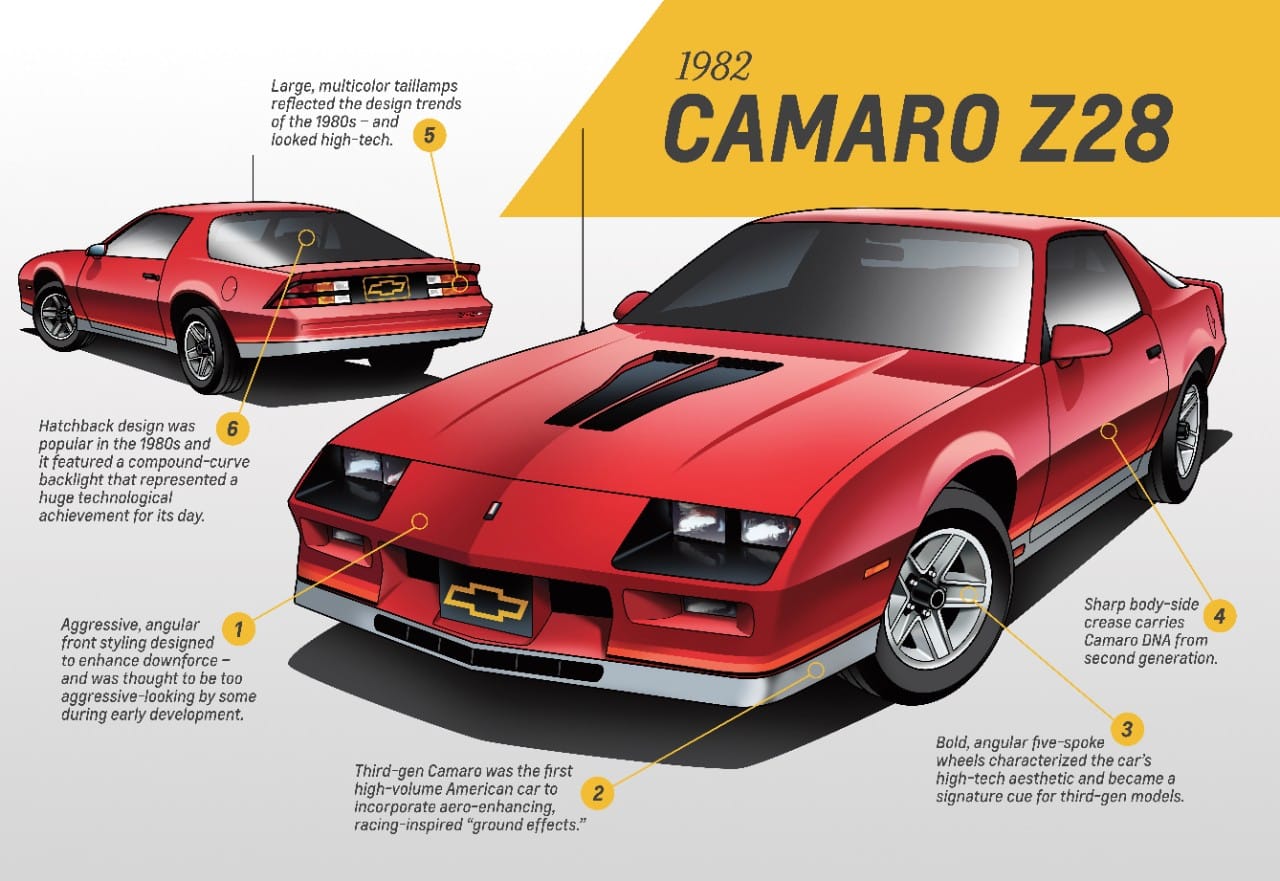Design Analysis Highlights of the Third-Gen Camaro—1982-1992
The debut of the sixth-gen Camaro is growing nearer and nearer, so what better way to celebrate its premiere than with an in-depth look at the five generations that have preceded it?
So far, Chevrolet’s own designers have shared their insights on the first-gen and second-gen Camaro with us. To walk us through the design elements of the third-generation, GM reached out to John Cafaro, executive director of Chevrolet Global Car Design and proud owner of a third-generation Camaro “1LE” racecar.
“The third-generation Camaro represented a distinct breakaway from the previous generations, which were undeniably influenced by European grand touring cars,” says Cafaro. “This was a uniquely American design with a form developed for function – and its aggressive front-end styling was deemed almost too aggressive by some in the company.”
The third-gen is also notable for being the first high-volume American production car to feature aero-enhancing, racing-inspired ground effects, and its distinctive large backlight. It was that revolutionary styling that earned the Camaro Z28 the 1982 Motor Trend Car of the Year Award.
“Perhaps more than any other generation, the third-generation Camaro was a car of its time,” said Cafaro. “You can see that influence in every detail of the car, from the aerodynamic details of the exterior, such as the ground effects on the Z28, to the introduction of digital instruments on the interior.”
Cafaro’s third-generation Camaro design highlights focus on elements of the award-winning 1982 Z28:
- Quad rectangular headlamps gave Camaro a contemporary appearance and were part of the aggressive front-end design
- A hatchback was de rigueur in the 1980s and the Camaro’s large backlight compound-curved glass was a technological achievement in its day
- Ground effects on the Z28 were inspired by Formula 1 racecars and represented the first production application for a mass-produced American car – kicking off a styling trend that would become an industry-wide staple of 1980s automotive design
- Linear five-spoke wheels complemented the car’s angular proportion
- A characteristic sharp body-side crease was part of Camaro’s DNA and neatly divided the upper and lower sections of the angular body
- Large, multi-color taillights spanned the rear panel, adding to the high-tech ambience of the era.
Stay tuned for the fourth installment of our exciting “Better Know a Camaro” segment! Up next: the Fightin’ Fourth-Generation!

The News Wheel is a digital auto magazine providing readers with a fresh perspective on the latest car news. We’re located in the heart of America (Dayton, Ohio) and our goal is to deliver an entertaining and informative perspective on what’s trending in the automotive world. See more articles from The News Wheel.



